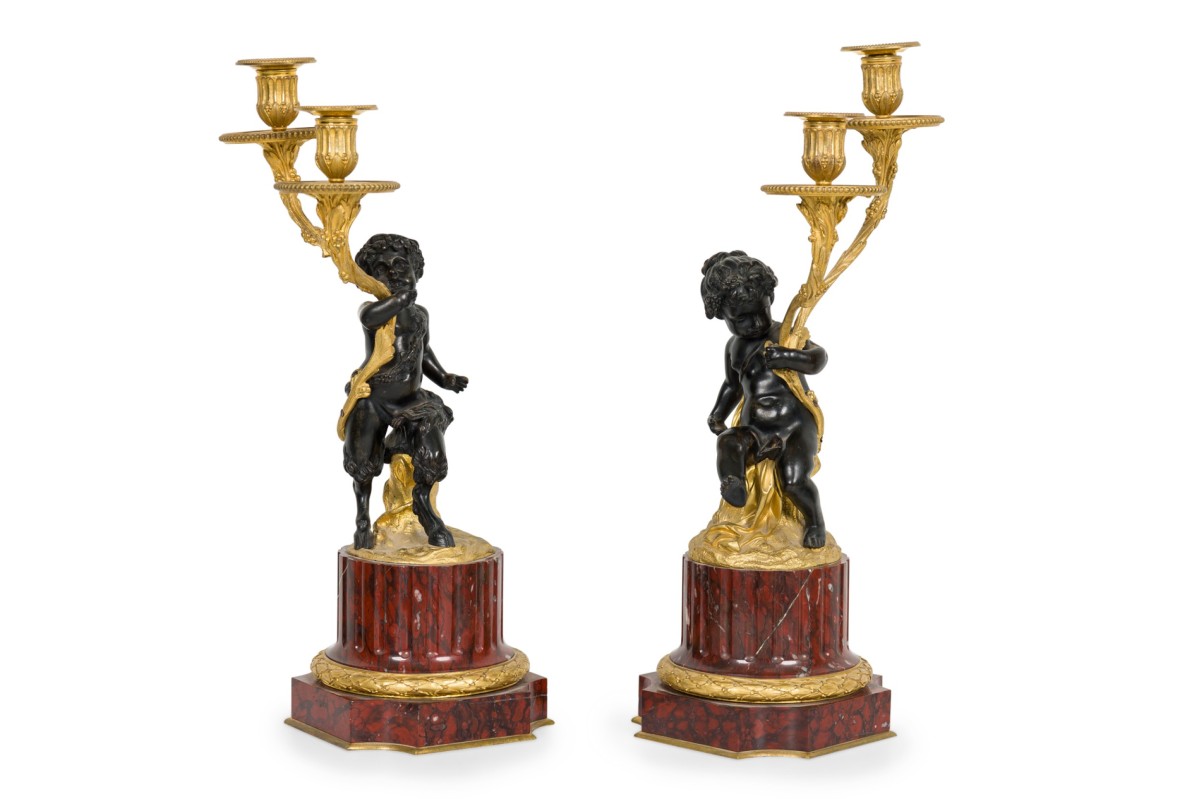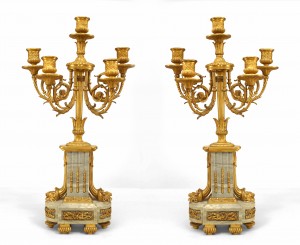X
{{ modalTitle }}
PLEASE FILL IN THE REQUIRED FIELDS.X
X
{{ modalTitle }}
Choose one of the options below.X
ITEM SUCCESSFULLY
ADDED TO PROJECT
Pair of French Louis XVI Porcelain Candlesticks
 French
French Louis XVI
Louis XVI Accessories/Décor/Bric-a-Brac, Dining Room
Accessories/Décor/Bric-a-Brac, Dining Room Candelabras/Candle Holders, Candle Holders, Candle Holders/Centerpieces
Candelabras/Candle Holders, Candle Holders, Candle Holders/Centerpieces
Newel Warehouse
32-00 Skillman Ave
Long Island City NY - 11101
 (212) 758-1970
(212) 758-1970
Pair of French Louis XVI Porcelain Candlesticks

Newel Warehouse
32-00 Skillman Ave
Long Island City NY - 11101
 (212) 758-1970
(212) 758-1970
 Accessories/Décor/Bric-a-Brac, Dining Room
Accessories/Décor/Bric-a-Brac, Dining Room Candelabras/Candle Holders, Candle Holders, Candle Holders/Centerpieces
Candelabras/Candle Holders, Candle Holders, Candle Holders/CenterpiecesLouis XVI
King Louis-Auguste reigned in France between 1774 to 1793. The Louis XVI style was a return to classicism looking to Greek and Roman culture for inspiration. Characteristics of this style were architectural ornamentation, classic symmetry, geometric marquetry,decorative escutcheons, small mechanized elements, and the predominant use of mahogany with linear gilt bronze mounts that emphasized veneers. Decorative motifs such as garland swags, horns of plenty, vasiform shapes, olive leaves, and cone finials were common and often referencing historical styles.
Festoon
A festoon is a Renaissance and Neoclassical motif of a wreath or garland hung from two points. In architecture, festoons typically depict flowers, leaves, ribbons, or fruit.
Porcelain
Porcelain is a hard, non-porous pottery. Porcelain is white, has a fine-grained body and usually translucent. Porcelain differs from earthenware in that earthenware is porous, opaque and coarse. True porcelain is made of kaolin or china clay.
Louis XVI
King Louis-Auguste reigned in France between 1774 to 1793. The Louis XVI style was a return to classicism looking to Greek and Roman culture for inspiration. Characteristics of this style were architectural ornamentation, classic symmetry, geometric marquetry,decorative escutcheons, small mechanized elements, and the predominant use of mahogany with linear gilt bronze mounts that emphasized veneers. Decorative motifs such as garland swags, horns of plenty, vasiform shapes, olive leaves, and cone finials were common and often referencing historical styles.
Festoon
A festoon is a Renaissance and Neoclassical motif of a wreath or garland hung from two points. In architecture, festoons typically depict flowers, leaves, ribbons, or fruit.
Porcelain
Porcelain is a hard, non-porous pottery. Porcelain is white, has a fine-grained body and usually translucent. Porcelain differs from earthenware in that earthenware is porous, opaque and coarse. True porcelain is made of kaolin or china clay.
Louis XVI
King Louis-Auguste reigned in France between 1774 to 1793. The Louis XVI style was a return to classicism looking to Greek and Roman culture for inspiration. Characteristics of this style were architectural ornamentation, classic symmetry, geometric marquetry,decorative escutcheons, small mechanized elements, and the predominant use of mahogany with linear gilt bronze mounts that emphasized veneers. Decorative motifs such as garland swags, horns of plenty, vasiform shapes, olive leaves, and cone finials were common and often referencing historical styles.
Festoon
A festoon is a Renaissance and Neoclassical motif of a wreath or garland hung from two points. In architecture, festoons typically depict flowers, leaves, ribbons, or fruit.
Porcelain
Porcelain is a hard, non-porous pottery. Porcelain is white, has a fine-grained body and usually translucent. Porcelain differs from earthenware in that earthenware is porous, opaque and coarse. True porcelain is made of kaolin or china clay.












